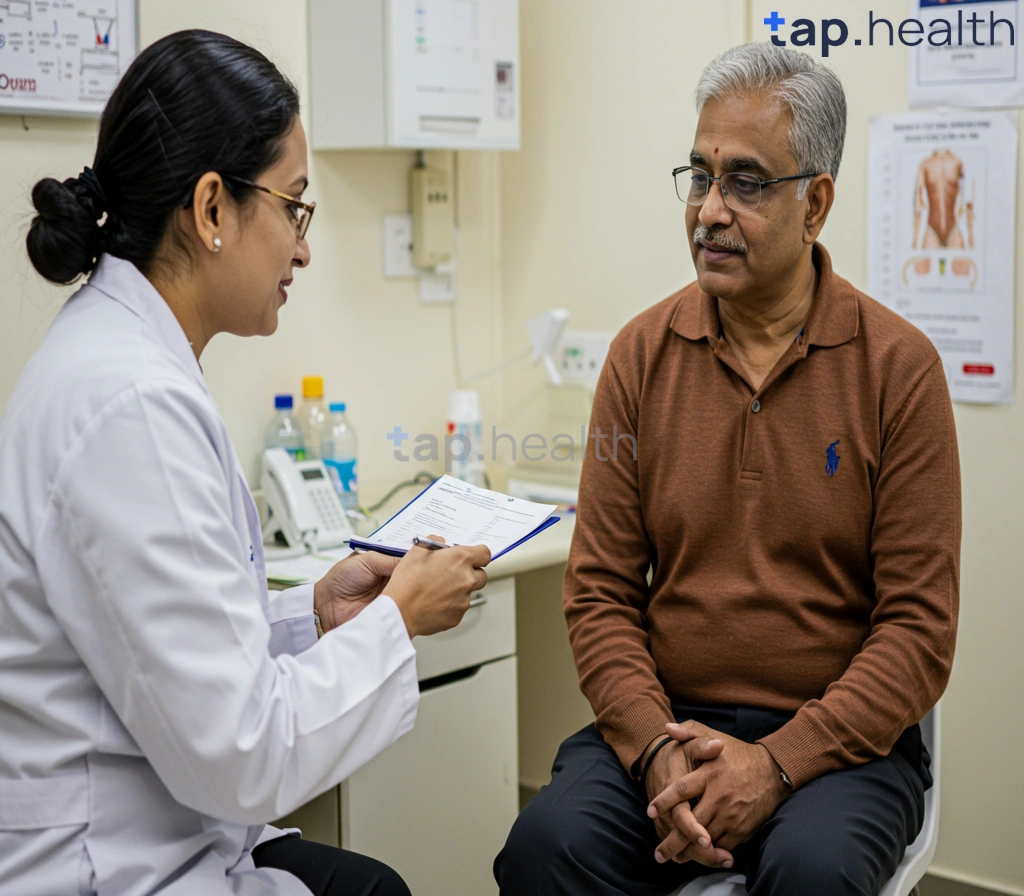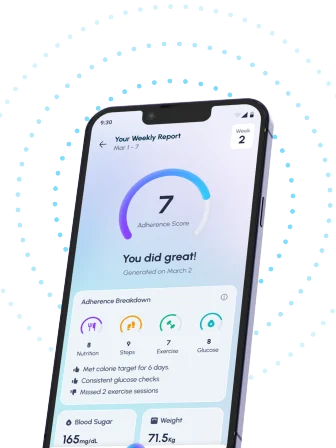Table of Contents
- Mayo Clinic’s Enzyme Discovery: Revolutionizing Diabetes Treatment?
- Understanding Mayo Clinic’s Diabetes Breakthrough: Enzyme Research Explained
- New Enzyme Discovery from Mayo Clinic: Hope for Diabetes Patients?
- Mayo Clinic’s Diabetes Research: Key Enzyme Findings and Future Implications
- Is This Enzyme the Key to a Diabetes Cure? Mayo Clinic’s Latest Research
- Frequently Asked Questions
- References
Exciting news is shaking up the diabetes research world! Scientists at the Mayo Clinic have announced a potentially groundbreaking discovery involving a novel enzyme, and it could revolutionize how we treat and understand this chronic condition. This blog post will delve into the specifics of Mayo Clinic’s Enzyme Discovery: A Breakthrough in Diabetes Research, exploring the implications of this exciting development and what it means for the future of diabetes management. We’ll break down the complex science in an easy-to-understand way, so whether you’re a researcher, a patient, or simply curious about medical breakthroughs, you’ll find this informative and fascinating. Get ready to learn about this game-changing discovery!
Mayo Clinic’s Enzyme Discovery: Revolutionizing Diabetes Treatment?
Imagine a future where type 2 diabetes, particularly its devastating impact in India and other tropical regions, is significantly less prevalent. That future might be closer than we think, thanks to a potentially groundbreaking enzyme discovery from the Mayo Clinic. While details are still emerging, the implications are enormous. This is especially exciting given that a whopping 80% of type 2 diabetes cases could be prevented or delayed simply through lifestyle changes – something we already know, but this research might offer a powerful new tool to back that up. Research consistently supports this.
Understanding the Enzyme’s Potential
The Mayo Clinic’s research focuses on the root causes of type 2 diabetes: insulin resistance and pancreatic beta-cell dysfunction. Think of it like this: your body’s struggling to use the insulin it produces (resistance) or it’s not making enough insulin in the first place (dysfunction). This new enzyme could potentially help address both, paving the way for entirely new treatment approaches. This is incredibly important in places like India, where diabetes rates are skyrocketing, often linked to shifts in diet and lifestyle. Effective management is now more critical than ever.
Preventing Diabetes: It’s All About Lifestyle
Even with this exciting new discovery, the importance of prevention can’t be overstated. It’s like building a strong foundation for a house; you wouldn’t skip the groundwork, would you? A healthy lifestyle remains our best defense. This means:
- Regular Exercise: Aim for at least 30 minutes most days.
- Balanced Diet: Load up on fruits, vegetables, and whole grains. Think vibrant colors on your plate!
- Healthy Weight: Maintaining a healthy BMI reduces your risk significantly.
Regular check-ups, especially blood glucose monitoring, are crucial, particularly if you have a family history or other risk factors common in Indian and tropical populations. Learning how to potentially reverse diabetes (while challenging) highlights the power of lifestyle changes.
Empowering Individuals: A Holistic Approach
The Mayo Clinic’s work gives us renewed hope, emphasizing the importance of continued research and proactive health management. For those in India and other tropical regions, a healthy lifestyle is the cornerstone of prevention and management. Regular check-ups with healthcare professionals and consistent lifestyle changes are key. Exploring how technology can help can offer additional support too. It’s a journey, not a race, and every step counts.
Understanding Mayo Clinic’s Diabetes Breakthrough: Enzyme Research Explained
A Promising Development in Diabetes Management
The sheer scale of the diabetes crisis is alarming. The International Diabetes Federation reports a staggering 50% of cases worldwide go undiagnosed (https://diabetesatlas.org/data/en/world/), a truly sobering statistic. This underscores the urgent need for better detection and treatment. Excitingly, research from the Mayo Clinic offers a potential game-changer: a newly discovered enzyme with the potential to revolutionize diabetes management. Imagine a future with significantly improved blood sugar control, particularly beneficial in regions like India and other tropical countries heavily impacted by this disease.
The Enzyme’s Role in Diabetes
While details are still emerging, this new enzyme seems to offer a novel way of regulating blood sugar. Think of it like a finely-tuned thermostat for your body’s glucose levels. This could lead to better glucose control, potentially reducing medication needs for some and significantly lowering the risk of serious complications. Early results are encouraging, though further research is essential. The potential benefits are especially significant in areas with limited access to advanced healthcare. For a deeper dive into the connection between obesity and diabetes, check out our article on Understanding the Link Between Diabetes and Obesity.
Implications for India and Tropical Countries
The impact of this discovery could be transformative, particularly in places like India where diabetes rates are exceptionally high. Better diagnostic tools and treatments could mean fewer cases of devastating complications like retinopathy, neuropathy, and kidney disease. This highlights the crucial need for increased awareness and proactive screening programs in these regions. Early detection is key, and this enzyme research offers a glimmer of hope for more effective tools. Effective diabetes education plays a crucial role, as explained in our article, How Diabetes Education Enhances Health Outcomes.
Next Steps: Towards a Healthier Future
This Mayo Clinic breakthrough is a major step forward. The next phase involves translating this exciting discovery into affordable and accessible treatments for everyone. Continued investment in diabetes research – particularly in high-prevalence areas – is vital. This includes strengthening awareness campaigns and improving access to healthcare; a multi-pronged approach is essential to tackle this global health challenge.
New Enzyme Discovery from Mayo Clinic: Hope for Diabetes Patients?
The soaring rates of diabetes, especially among young people, are undeniably alarming. In the US alone, approximately 35 out of every 10,000 youths are diagnosed – a stark reminder of this chronic disease’s devastating impact. This crisis is particularly acute in India and other tropical regions, where prevalence is significantly higher, often linked to socioeconomic factors and limited access to healthcare. That’s why a recent enzyme discovery from the Mayo Clinic feels like a real breakthrough.
Understanding the Potential Game Changer
Researchers have identified a novel enzyme with potential blood sugar-regulating properties. While the specifics are still under investigation – and clinical trials are underway – early findings are incredibly promising for both type 1 and type 2 diabetes. Imagine a future with new, more effective treatments, especially for vulnerable populations in regions where access to advanced medical care is often a major hurdle. This could truly be transformative.
A Reason for Optimism, Not a Cure-All
This discovery offers a renewed sense of hope, especially for early intervention in high-risk areas. It’s important to remember that this is a significant step forward in research, not a magic bullet. More research is vital to confirm these initial findings and translate them into effective treatments. But this breakthrough underscores the power of scientific innovation in tackling this complex disease. For more on managing diabetes, check out our article on Safe and Effective Dietary Supplements for Diabetes Care.
What You Can Do
For those in India and other tropical countries concerned about diabetes, proactive steps are key. Stay informed about research advancements, prioritize a healthy lifestyle (diet and exercise are your friends!), and consult your doctor regularly. This research from the Mayo Clinic is exciting, and we’ll keep you updated. For a deeper dive into the possibilities of diabetes management, have a look at our article, Can You Get Rid of Diabetes?
Mayo Clinic’s Diabetes Research: Key Enzyme Findings and Future Implications
The global diabetes crisis is escalating rapidly. The International Diabetes Federation predicts a jump from 536.6 million cases (ages 20-79) in 2021 to a staggering 783.7 million by 2045. https://diabetesatlas.org/data/en/world/ This surge, particularly alarming in places like India and other tropical regions, demands urgent action. Thankfully, Mayo Clinic research offers a glimmer of hope.
Unlocking the Enzyme’s Secret
Mayo Clinic scientists have pinpointed a key enzyme strongly linked to type 2 diabetes development. While the full details are still under wraps (publication is pending!), this discovery is monumental. Understanding how this enzyme works could pave the way for targeted treatments and preventative strategies. This is especially vital in high-risk tropical populations, where genetic factors and lifestyle combine to increase susceptibility. Think of it like finding a master switch – once we understand it, we can potentially fine-tune the body’s response to sugar. Improving gut health, as highlighted in our article on prebiotics and probiotics, could also play a crucial role.
Hope for India and Beyond
The implications are huge. Imagine more effective, personalized diabetes treatments, improving lives across India and other tropical countries. Coupled with public health initiatives focusing on lifestyle changes and early detection, this enzyme breakthrough could significantly curb the projected rise in diabetes cases. However, it requires increased investment in research and healthcare infrastructure specifically tailored to the unique needs of these communities. It’s also critical to consider the interconnectedness of conditions like diabetes and fatty liver disease, as detailed here: The Link Between Diabetes and Fatty Liver Disease. A holistic approach is essential.
The Road Ahead
This Mayo Clinic discovery is a game-changer. But the fight against diabetes is a marathon, not a sprint. Continued research and global collaboration are vital to translate this scientific breakthrough into real-world improvements in diabetes care. Let’s support the research and advocate for equitable access to these potentially life-saving treatments.
Is This Enzyme the Key to a Diabetes Cure? Mayo Clinic’s Latest Research
Imagine a world where managing diabetes is significantly easier. That’s the exciting possibility sparked by Mayo Clinic’s research into a newly discovered enzyme. This breakthrough offers a real glimmer of hope, especially for the millions in India and other tropical countries disproportionately affected by this disease. We’re talking about a global crisis: 61% of all people with diabetes are aged 20-64 source – prime working age! This underscores the urgent need for better treatments, particularly in regions like India where diabetes is rapidly escalating.
Understanding the Enzyme’s Potential
While we’re still in the early stages of understanding this enzyme’s precise mechanism, the initial findings are incredibly promising. Early research suggests it plays a vital role in regulating blood sugar, the root cause of many diabetes complications. This potential impact on diabetes management is huge, especially considering the vast population of adults aged 20-64 and 65+ source. Think of it like a finely tuned thermostat for blood sugar levels. However, more research – particularly in diverse populations with varying lifestyles and diets – is absolutely crucial. For example, how will this enzyme respond to the unique dietary habits common in tropical climates? Interested in dietary approaches? Check out this insightful article: Can a Plant-Based Diet Reverse Diabetes?
Next Steps and Regional Implications
This Mayo Clinic discovery is a monumental leap forward, but the journey to a potential cure is a marathon, not a sprint. Further research into efficacy and safety is paramount, and it’s vital this research includes diverse populations from India and other tropical nations. We need to ensure equitable access to any resulting treatments. So, stay tuned to Mayo Clinic’s publications for updates. In the meantime, it’s crucial to work closely with your healthcare provider for personalized advice. And for those interested in the role of technology in diabetes management, this article offers a fascinating overview.
Frequently Asked Questions on Mayo Clinic’s Enzyme Discovery
Q1. What is the significance of the Mayo Clinic’s recent enzyme discovery for diabetes treatment?
The Mayo Clinic has discovered a novel enzyme with potential to regulate blood sugar, addressing both insulin resistance and pancreatic beta-cell dysfunction, key factors in type 2 diabetes. This could lead to new treatment approaches and improved blood sugar control, particularly benefiting regions like India with high diabetes prevalence.
Q2. How can this enzyme discovery impact diabetes prevention and management, especially in India and other tropical regions?
While a healthy lifestyle (diet, exercise, weight management) remains crucial for prevention, this enzyme discovery offers a potential new tool to aid in both prevention and treatment. In regions like India, where diabetes rates are high, this could lead to improved treatment options and potentially reduce the risk of serious complications.
Q3. What are the limitations or uncertainties surrounding this enzyme discovery and its potential applications?
The research is still in early stages. Further investigation is needed to fully understand the enzyme’s mechanism, confirm its effectiveness in clinical trials, and ensure its safe and accessible application for a broad population. The specific effectiveness in diverse populations, differing lifestyles, and dietary habits remains to be determined.
Q4. How can individuals in India and tropical regions benefit from this research, and what steps can they take now to improve their health?
Individuals can benefit by staying informed about future developments and continuing to prioritize a healthy lifestyle, including regular exercise, a balanced diet, maintaining a healthy weight, and regular check-ups with healthcare professionals. Early detection and proactive management remain essential.
Q5. What is the next step in the research and development of this enzyme discovery, and what are the broader implications for the future of diabetes care?
The next steps involve further research, including clinical trials, to confirm the enzyme’s efficacy and safety, followed by development of affordable and accessible treatments. This discovery could significantly improve diabetes management worldwide, especially in high-prevalence regions, by offering new treatment options and improving the effectiveness of existing approaches.
References
- A Practical Guide to Integrated Type 2 Diabetes Care: https://www.hse.ie/eng/services/list/2/primarycare/east-coast-diabetes-service/management-of-type-2-diabetes/diabetes-and-pregnancy/icgp-guide-to-integrated-type-2.pdf
- Towards Transparent and Accurate Diabetes Prediction Using Machine Learning and Explainable Artificial Intelligence : https://arxiv.org/pdf/2501.18071
- Diabetes research advances with new enzyme publication from Mayo




